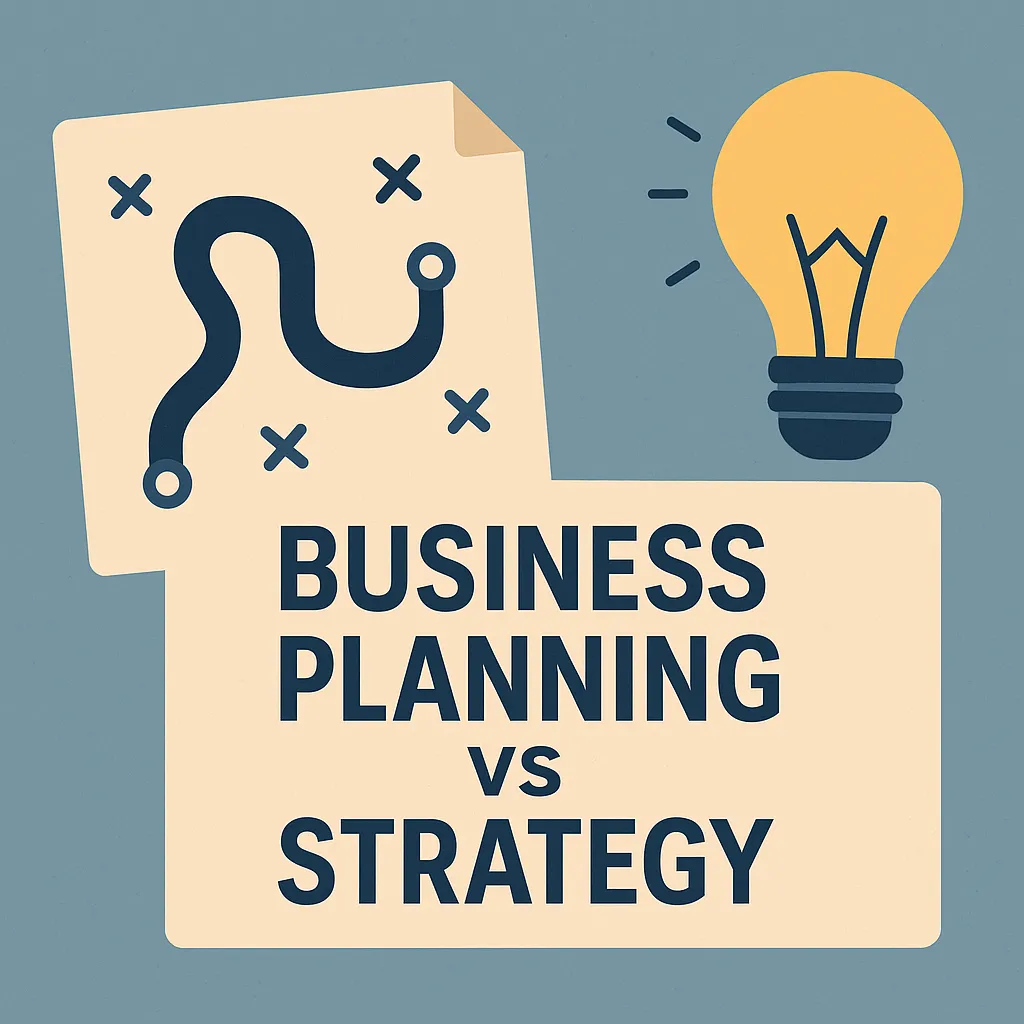Many small business owners use “planning” and “strategy” interchangeably — but they’re not the same thing. Understanding the difference between business planning and strategy can be the key to building a company that not only grows, but thrives long-term. In this article, we’ll break down these two vital business concepts, show how they work together, and offer examples to help you apply them with confidence.
What Is Business Planning?
Business planning is the process of setting clear goals and mapping out the steps your company will take to achieve them. It focuses on operational and tactical actions, timelines, budgets, and measurable milestones.
Key Elements of Business Planning
- Setting short- and medium-term objectives
- Forecasting sales, expenses, and cash flow
- Developing marketing and operational plans
- Identifying risks and creating contingency plans
Think of your business plan as the detailed itinerary for a trip. It tells you when and where to stop, how much money you’ll need, and how you’ll measure progress along the way.
Example of Business Planning
A local bakery wants to open a second location. Their business plan would include specific targets like:
- Finding a new retail space within 6 months
- Securing a $150,000 loan by Q2
- Launching marketing campaigns two months before the grand opening
- Achieving $250,000 in first-year sales at the new location
The plan outlines how the bakery will grow — but not necessarily why they’re choosing this growth path over others.
What Is Business Strategy?
Business strategy is the bigger-picture thinking behind what your business will focus on to succeed and why those choices are the best ones. It involves understanding your competitive advantage, target market, and the best positioning for long-term success.
Key Elements of Business Strategy
- Clarifying your mission, vision, and core values
- Choosing a target market and ideal customer profile
- Identifying competitive advantages and differentiation
- Prioritizing growth opportunities and initiatives
In the trip analogy, your strategy answers the deeper questions: Why take the trip at all? Why choose this destination over others? What makes this trip meaningful or profitable?
Example of Business Strategy
Continuing with our bakery example, the owners might decide that their strategy is to become the region’s go-to destination for gluten-free baked goods, serving health-conscious consumers overlooked by traditional bakeries.
That strategic focus leads them to:
- Prioritize locations near health food stores and gyms
- Invest in brand messaging that highlights gluten-free certification
- Form partnerships with nutritionists and wellness coaches
- Develop proprietary recipes that competitors can’t easily replicate
The strategy shapes the business plan — not the other way around.
Why Small Businesses Need Both
Many small businesses fail because they focus exclusively on either planning or strategy, but rarely both. A solid business plan without a smart strategy can lead to short-term success but long-term stagnation. A brilliant strategy without a clear plan can lead to missed deadlines, wasted resources, and organizational chaos.
How They Work Together
- Strategy decides what you aim to achieve and why.
- Planning figures out how you will achieve it and when.
Strategy sets the destination; planning draws the roadmap.
Quick Comparison: Business Planning vs Business Strategy
| Aspect | Business Planning | Business Strategy |
|---|---|---|
| Focus | Execution and logistics | Direction and positioning |
| Timeframe | Short to medium term (1–3 years) | Long term (3–5+ years) |
| Questions Answered | How? When? Who? | What? Why? |
| Examples | Opening new stores, launching marketing campaigns | Choosing a niche, creating a competitive advantage |
How to Strengthen Your Business with Both
1. Start with Strategy
Before you make detailed plans, clarify your core strategy. Where do you want your business to be in five years? What value will you deliver to customers better than anyone else?
2. Then Build the Plan
Once your strategy is clear, build a detailed, realistic business plan that supports it. Assign specific action steps, deadlines, resources, and KPIs.
3. Review and Adjust Regularly
Your environment will change. Review your strategy annually and your business plan quarterly to stay agile and aligned.
Final Thoughts
Understanding the difference between business planning and strategy empowers you to lead your company with clarity and confidence. Strong strategy keeps you focused on the right goals. Smart planning ensures you achieve them efficiently.
If you want help aligning your planning and strategy for sustainable growth, book a free Discovery Call today with Scotch Creek Consulting. We’ll help you map out a clear, actionable path to your next level of success.


Leave a Reply